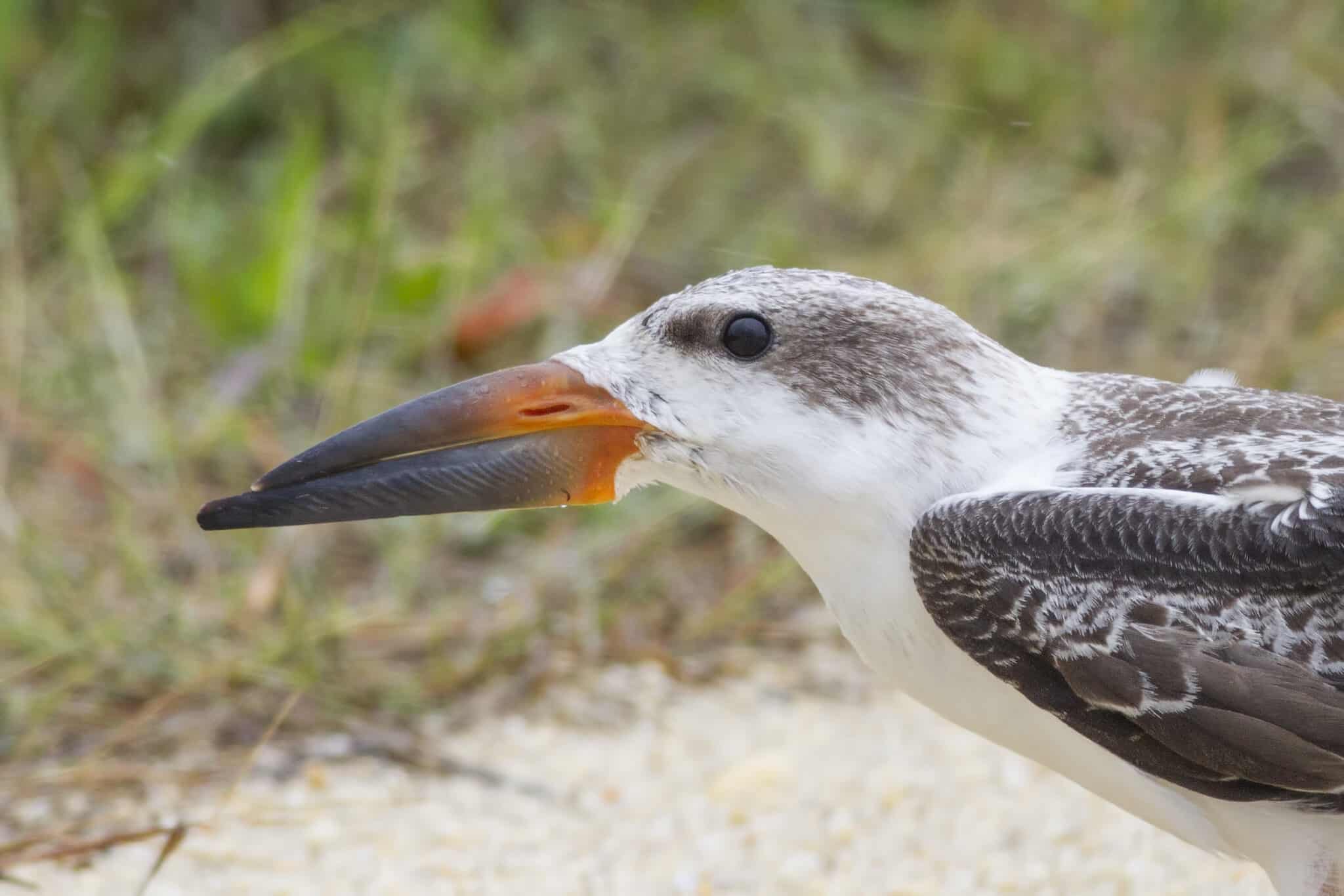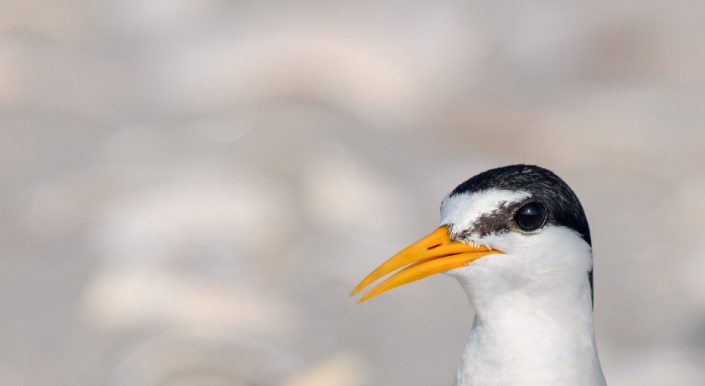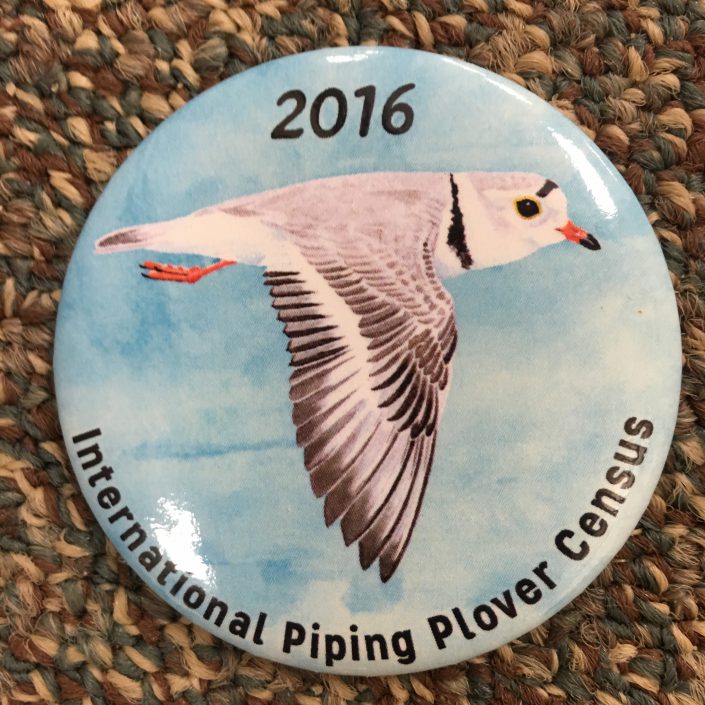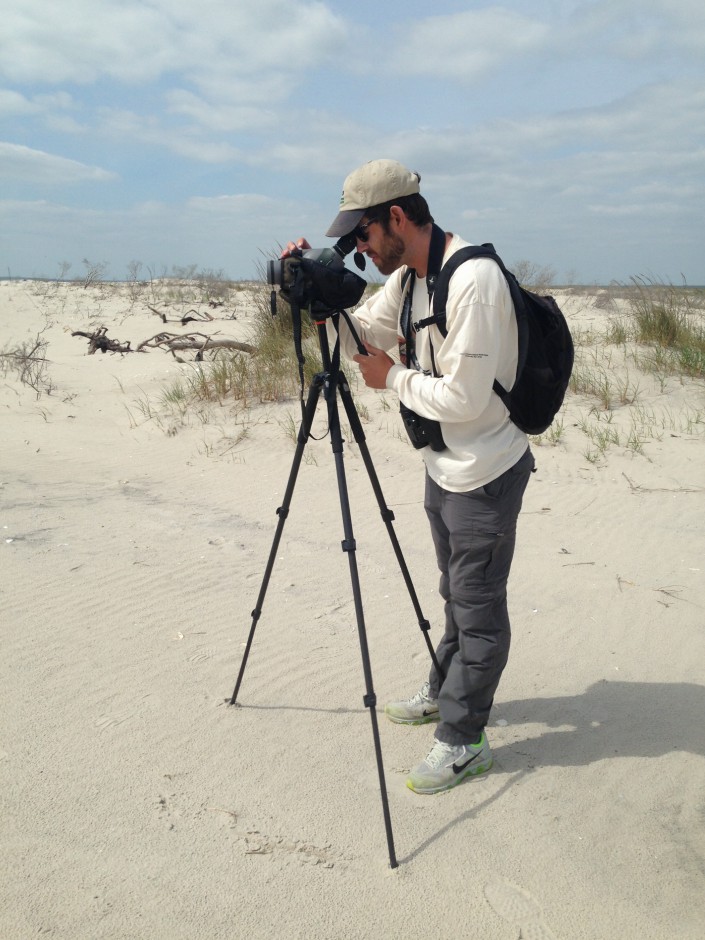Beach Nesting Birds in New Jersey- 2024 Breeding Season Recap
by Todd Pover, Senior Wildlife Biologist
New Jersey Fish and Wildlife has released their annual reports for the 2024 beach nesting bird season and the results were mixed. Piping plovers had one of their worst seasons on record in New Jersey since federal listing in 1986. Least terns also fared poorly, while black skimmers and American oystercatchers posted more promising breeding results.
According to the state report, piping plovers recorded their lowest population in New Jersey in 2024, at just 89 pairs, and statewide productivity was poor, as well, at just 0.54 chicks fledged per pair, third lowest on record. The state’s piping plover population has fluctuated greatly in the past five years, reaching 137 pairs in 2021, close to the peak of 144 pairs, only to now fall to the historic low. While the low pair count is concerning enough in its own right, this year’s poor productivity also doesn’t bode well for next year, as productivity is often strongly linked to short-term population changes for piping plovers. Productivity during the 2024 breeding season was well below both the long-term New Jersey average (1.01) and the federal recovery goal (1.50). Furthermore, productivity has been poor over the past several years, putting future population increases at risk.
Pair counts dropped along nearly the entire Jersey coast, with Sandy Hook having one of the most dramatic losses from 34 pairs in 2023 to 14 in 2024. The population loss there is especially troubling given Sandy Hook was once a stronghold for the state, its piping plover population has been trending downward from just over 50 pairs about a decade ago. Productivity was also very poor at Sandy Hook in 2024, just 0.50 chicks per pair, again this site used to be one of New Jerseys’ productivity hotspots for piping plovers. Holgate, a Unit of the Edwin B. Forsythe NWR, and one of the sites monitored by CWF, continued its recent trend of having the most breeding plovers in the state, with 48 pairs or 54% of the state’s population in 2024. Unfortunately, it experienced especially bad productivity, producing just 0.35 chicks per pair. One of the notable highlights in the state was the Barnegat Light Habitat Restoration Area, a site CWF has had a lead role in creating and maintaining, where 5 pairs produced 10 fledgling or 2.00 per pair.
Although New Jersey’s least tern population was surprisingly robust this year with 1,436 total adults recorded, two concerning recent trends for this colonial species continued in 2024. The number of colonies dropped to just 11, the lowest since 1976. Productivity for the state’s least terns was poor, only 146 fledglings were recorded. The highlight was the TNC South Cape May Meadows site, where 80 fledglings were produced.
Black skimmers were also only present at just a few colonies in New Jersey in 2024 – three known active colonies at Holgate, Horseshoe Island, and Stone Harbor Point – the lowest number of colonies documented since 1976. On the other hand, their population, with 2341 adults, was on the high side of the past 20-year range and they had a very good season productivity-wise. Strong results were seen at all three colonies, resulting in nearly 1000 fledglings produced overall. Horseshoe Island had the state’s largest colony with 1,347 breeding adults, helping demonstrate the importance of the recent conservation efforts at this relatively new site.

American oystercatcher data are more difficult to assess, as only a portion of the state’s breeding population is monitored, with most of the marsh nesting breeders, which account for a significant portion, left unmonitored. At 155 pairs in 2024, those oystercatchers regularly monitored – primarily the sandy beach strand population – continued their steady long-term growth trend over the past two decades or so since regular monitoring began in New Jersey.
Productivity was also strong for the oystercatchers in New Jersey in 2024, clocking in at just over 0.50 chicks fledged per pair, which is the recovery target. As a long-lived species, annual productivity goals are lower for American oystercatchers, compared to the shorter-lived piping plovers. Among the highlights for American oystercatchers in New Jersey this year were Holgate with 53 pairs, the most in the state, producing 0.79 fledglings per pair and Horseshoe Island recording an average of 1.50 fledglings from 16 pairs, both of these being sites CWF helped monitor and manage.
Read the full 2024 NJ Piping Plover Nesting Results
Read the full 2024 Beach Nesting Bird Project Report













